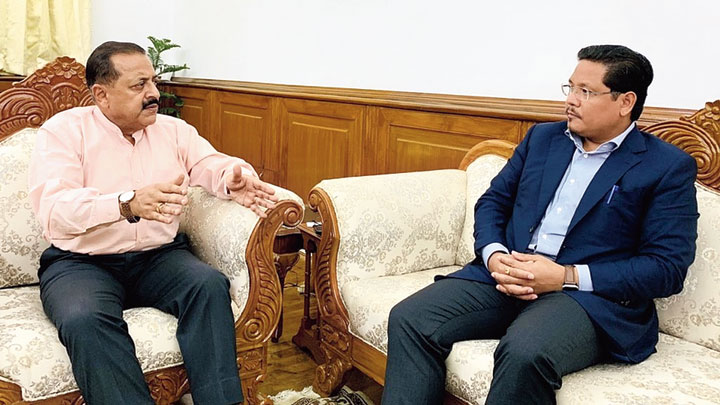The Centre is “positive” on the demand made by Meghalaya to bifurcate the joint cadre of the All India Services officers with Assam.
Meghalaya chief minister Conrad K. Sangma said this after meeting Union minister of state for personnel Jitendra Singh in New Delhi on Friday.
On Singh’s reaction to the demand to bifurcate the joint cadre system between Assam and Meghalaya, Conrad said on Saturday: “It (reaction) was positive. Singh has, in fact, already moved the case and things are in the process. We are hoping for the best.”
On the reasons for the need to dismantle the joint cadre system, the chief minister pointed out that Meghalaya’s sanctioned strength is only around 70 All India Services officers.
“From the cadre strength point of view, we have approximately around 70 officers because of the joint cadre system. But if you look at Manipur, which has a separate cadre, it has more than 100 officers at present. Similarly, Nagaland has more than 90 officers. If you look at this aspect, states which are of the same size as us have a higher cadre strength,” Conrad told The Telegraph over phone.
Since the inception of Meghalaya in 1972, the two states have had a joint cadre of IAS, IPS and IFS officers, although demands have been made from time to time to bifurcate the system.
Conrad had written to Singh in February mentioning the need to bifurcate the joint cadre system of the all-India service officers.
It took 41 years for Meghalaya, which achieved statehood in 1972, to have a high court of its own. All along, the state was under Gauhati High Court.
But unlike in Meghalaya, the joint cadre system for IAS, IPS and IFS officers of Manipur and Tripura was bifurcated after the North-Eastern Areas (Reorganisation) Amendment Bill, 2011, was passed by Parliament.
For Meghalaya to have a separate cadre from Assam, Parliament would have to amend the North-Eastern Areas (Reorganisation) Act, 1971.











